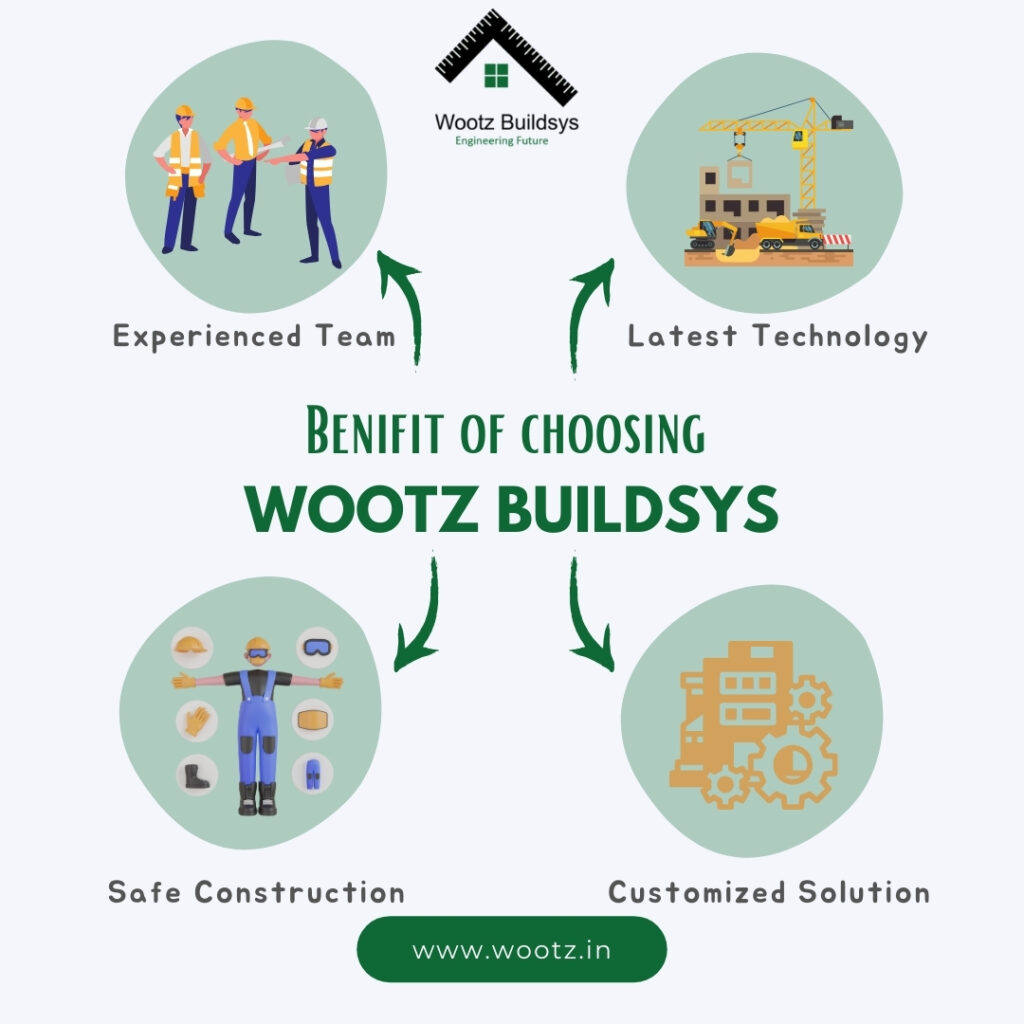The Pre-Engineered Building (PEB) industry has revolutionized the construction sector, particularly in large-scale projects. From warehouses and factories to commercial complexes and industrial units, the PEB industry offers efficient, cost-effective, and sustainable solutions. These pre-fabricated structures are manufactured off-site and assembled on location, significantly reducing construction time and ensuring optimal resource utilization.
Here, we will explore how the PEB industry is enhancing efficiency in large-scale projects, its key advantages, and why it has become a preferred choice for developers and project managers.
What is the PEB Industry?
The PEB industry focuses on designing and manufacturing pre-engineered buildings, where components such as steel frames, columns, beams, and roofing sheets are fabricated in a factory setting. These components are then transported to the construction site for assembly, which leads to a streamlined construction process. The PEB industry plays a vital role in sectors like industrial manufacturing, warehousing, commercial infrastructure, and logistics.

How the PEB Industry Enhances Efficiency in Large-Scale Projects
1. Time-Saving Construction
One of the most significant advantages of the PEB industry is the reduction in construction time. Traditional construction methods often require months or even years to complete, especially for large-scale projects. However, the pre-engineering approach allows for simultaneous fabrication of building components off-site, while site preparation is underway. This parallel process shortens the overall construction timeline by up to 50%, making it an attractive option for businesses that need rapid project completion.
2. Cost-Effectiveness
The PEB industry is known for its cost-effectiveness. Since the components are pre-designed and fabricated in factories, there is minimal wastage of materials, and labor costs are significantly reduced. Standardized designs and mass production help to lower overall project costs. Additionally, the speed of construction reduces labor expenses and overhead costs, providing an economical solution for large-scale projects.
3. Design Flexibility
The PEB industry offers considerable design flexibility, which is particularly important for large-scale projects. Although the components are pre-engineered, they can be customized to meet the specific needs of a project. Whether it’s a large warehouse requiring clear span structures or a multi-level commercial building, PEBs can be designed to accommodate various layouts, sizes, and requirements. This flexibility allows developers to tailor their projects to fit specific operational or functional needs.
4. Durability and Low Maintenance
Buildings constructed by the PEB industry are designed to be highly durable. Made primarily from steel, these structures are resistant to environmental factors like corrosion, fire, and extreme weather conditions. This durability ensures that PEBs require minimal maintenance over the years, making them a long-term investment for companies involved in large-scale projects. Their strength also makes them suitable for regions prone to seismic activity, high winds, and heavy loads.
5. Sustainability and Eco-Friendliness
In today’s construction environment, sustainability is a priority, and the PEB industry is contributing significantly to greener practices. The use of recyclable steel in pre-engineered buildings reduces the carbon footprint of construction projects. Additionally, the precision manufacturing process limits material waste, while the energy efficiency of PEBs can be enhanced by incorporating insulation, solar panels, and energy-saving systems. This makes the PEB industry an eco-friendly alternative to traditional construction methods.
6. Scalability and Expansion
Large-scale projects often require scalability to adapt to future growth. The PEB industry excels in providing buildings that are easily expandable. Whether it’s extending the length of a warehouse or adding extra floors to an office complex, PEBs offer the flexibility to modify the structure without disrupting operations. This adaptability makes PEBs ideal for companies that anticipate growth and need their buildings to evolve with their expanding business requirements.

Applications of PEB in Large-Scale Projects
The PEB industry has wide-ranging applications in various sectors, including:
- Warehouses and Logistics Centers: PEBs are ideal for storage and distribution facilities, providing large open spaces for racking systems, inventory storage, and logistics operations.
- Industrial and Manufacturing Plants: PEBs are used in industrial units that house heavy machinery, production lines, and manufacturing processes. Their durability ensures long-term performance in harsh industrial environments.
- Commercial Complexes: The PEB industry is increasingly being used to construct commercial buildings, including office complexes, retail outlets, and malls. Their flexibility allows for customized layouts and modern designs.
- Aircraft Hangars: PEBs are widely used for constructing large, clear-span structures such as aircraft hangars, where unobstructed space is crucial for housing planes and maintenance activities.
- Sports Facilities: From stadiums to indoor arenas, the PEB industry is providing cost-effective and scalable solutions for sports infrastructure.
Conclusion
The PEB industry is transforming the construction landscape by providing efficient, cost-effective, and sustainable solutions for large-scale projects. From rapid construction times and reduced costs to design flexibility and durability, PEBs offer numerous benefits that make them the preferred choice for industrial, commercial, and infrastructure developments. As the demand for faster and more efficient construction methods continues to rise, the PEB industry is set to play an even more significant role in shaping the future of large-scale projects.
Frequently Asked Questions (FAQs)
Q. How does the PEB industry reduce construction time?
The PEB industry reduces construction time by manufacturing building components off-site in a controlled factory environment. While these components are being produced, the foundation work can be completed on-site. Once the components are ready, they are transported and assembled quickly, cutting down the overall construction time.
Q. Are PEBs suitable for large-scale industrial projects?
Yes, PEBs are particularly suitable for large-scale industrial projects due to their durability, scalability, and cost-effectiveness. The PEB industry provides flexible designs that can accommodate various industrial requirements, such as heavy machinery, open spans, and high ceilings.
Q. Can PEBs be customized for unique project needs?
Absolutely. While the components in the PEB industry are pre-engineered, they can be tailored to meet specific design and operational needs. PEBs offer a high degree of customization in terms of layout, dimensions, and functionality, allowing them to cater to diverse projects.
Q. Are PEB buildings durable in extreme weather conditions?
Yes, buildings constructed by the PEB industry are designed to withstand extreme weather conditions such as high winds, heavy rain, and seismic activity. Steel, the primary material used in PEBs, is highly durable and resistant to environmental degradation, making PEBs a reliable choice for various climates.
rimbatoto togel online toto togel toto togel situs toto situs toto jacktoto situs toto jacktoto situs toto slot gacor jacktoto slot online


